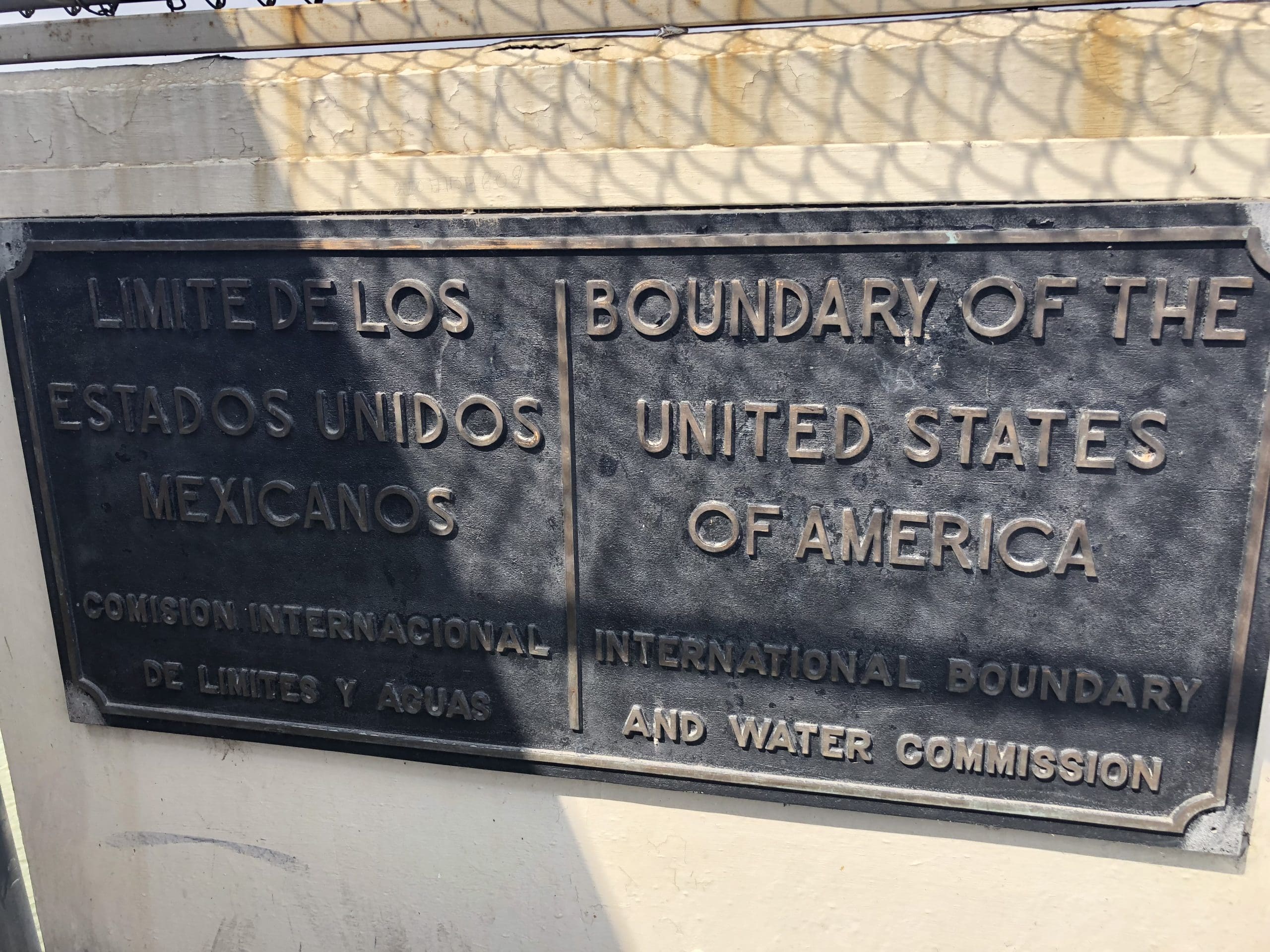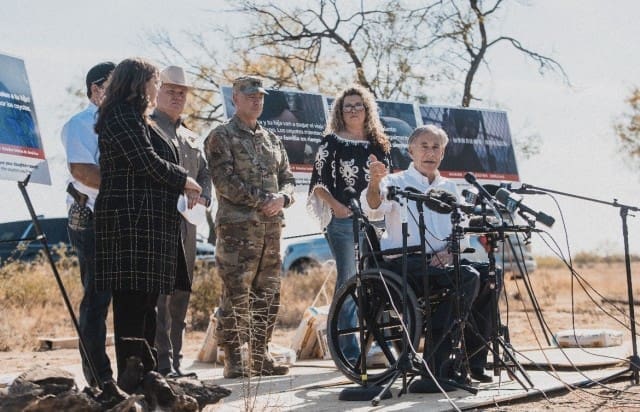As the Biden administration’s open border policies give Mexican cartels control over the southwest border, State Sen. Bob Hall (R–Edgewood) interviewed subject matter expert Jaeson Jones, a retired Texas Department of Public Safety captain with extensive experience on Texas’ southern border.
“What’s happening at that border directly impacts everyone in this country because it is no longer just a U.S.-Mexico problem, nor is it a Texas or border problem only; there is not a community in this country that is not impacted,” said Jones. “What we are really witnessing is the largest U.S. intelligence failure since 9/11.”
Jones explained that the national security threats of an unsecured border are imminent when Mexico is quickly descending into a narco-state and the cartels have amassed enough power and equipment to function as a parallel government.
He explained that the fentanyl overdoses, which he calls poisonings, are only the beginning.
Background – The Evolution of the Cartels
2006 – Insurgency
Prior to 2006, Jones says the cartels acted more like organized crime rings. However, in 2006, the Mexican government under President Felipe Calderón began hunting down the cartels.
“The reason they did this, and what was not told to the American public and to many around the world, is that these cartels had become so emboldened that they were literally using everything from 50-caliber belt-fed machine guns, 40-millimeter grenade rocket launchers, like light anti-tank weapons, hand grenades, and armored vehicles to take on local and state government,” explained Jones.
Jones, a DPS lieutenant stationed in Laredo at the time, recounted his experience with “the war.”
“We were stunned at what we were seeing, with six- to eight-hour gun battles right on our border, yet no one knew or was aware this was even occurring,” said Jones. “This was a major game changer as the cartels were truly fighting back against the Mexican government and that was the insurgency.”
2010 – Terrorism
From insurgency to terrorism, the cartels continued their war against the Mexican government.
Jones described the 2010 San Fernando massacre of 72 migrants by the Los Zetas Cartel, where they were shot in the back of the head and piled up on a ranch.
“The reason they committed that massacre is because they were at war with their rivals, who were the Gulf Cartel,” explained Jones. “They went into the Gulf Cartel’s territory to get the Mexican military to go after the people they were fighting, so they used this mass genocide—murder of 72 people—to try to get the Mexican government to go after the people they were fighting.”
“We saw that replicate itself again in Allende, Mexico,” added Jones.
The U.S. Drug Enforcement Agency targeted leaders of the Los Zetas, and in response, they murdered more than 300 people and dissolved the bodies in a mixture of diesel and lye.
“They have a saying in Mexico that you can’t count a body that doesn’t exist, and if you look at the murders that have taken place in Mexico, you’ll see that the missing numbers are tremendous, and the reason for that is because of the method that they use to dissolve bodies,” said Jones.
2015 – Parallel Government
By 2015, Jones says a parallel government had become apparent.
“Operation Jalisco commences. This is where President Nieto under the Nieto administration launched an operation to go after Cartel Jalisco New Generation [CJNG] leadership.”
According to Jones, Operation Jalisco sent both ground forces and helicopters into the Sierra mountains after CJNG.
“As the helicopters were coming in, one of them was shot out of the sky,” said Jones. “From there, the operation really fell apart. As ground units were blocked, they weren’t able to get into the mountains, and the leadership was not even affected.”
“That was further validated in 2019,” explained Jones, when an elite Mexican army unit from SEDENA captured the son of the Sinaloa Cartel leader El Chapo, and the city of Culiacán erupted in violence, forcing the Mexican government to release him.
“The government was forced to release him or lose family members of the Mexican military who had been taken hostage,” said Jones. “And that’s, again, more validation that the cartels had become so powerful that in many regions of that country, they were truly a parallel government. And that’s where they are today.”
In Texas
Jones explained how a 2013 Southlake murder demonstrated how these cartel actions are occurring even in areas away from the border. In this incident, a Gulf Cartel lawyer was assassinated at a Southlake mall.
In 2015, a headless body was found near South Padre Island. The killer was a U.S. Border Patrol Agent working with the Gulf Cartel.
“The truth is this nation has felt the impact of transnational crime and spillover violence for years,” said Jones.
However, Jones said the problems with the cartels go far beyond a border problem, or even an American problem, as CJNG is operational in 50 countries around the world.
“This is not a U.S Mexico problem; this is a global problem.”
And it has been for years.
What Can Be Done?
As the crisis on the U.S. southwest border worsens, Jones recommends a very specific course of action.
“Get these cartels designated as Foreign Terrorist Organizations so that we c[an] use tools of national power,” said Jones. “We’ve got to go after and destroy these [drug] labs and then target these cartels.”
In order to effectively accomplish this, Jones says the crime reporting databases are in need of serious work. Although he says the Nyberg National Incident-Based Reporting System is much improved from the FBI’s uniform crime report, it does not sufficiently meet the needs of law enforcement.
“I don’t need to know what happened 12 months ago, I need to know what happened 12 minutes ago if I’m going to conduct operations as fast as the intelligence cycle is today, and these failures to the nation are tremendous.”
Jones brought the issue back to a need for an offensive strategy.
“I wish I could sit here and tell you that things are going to get better, but unfortunately, they are not. It will get worse before it gets better, and the reason for it is because we are taking no proactive stance to go after these cartels.
“If you think that they are going to go away, let me be very clear: they are not. And they themselves will tell you that they are out of control,” said Jones. Additionally, “we’re not the only ones being impacted; the Mexican people have lost over 300,000 citizens since 2007. The corruption in Mexico is at the highest levels. That country has now fallen into a narco-state.”
However, Jones says it “absolutely can be fixed.”
Jones says “the problem is the American people haven’t been told and no solutions have been provided,” explaining how solutions do exist and “we’ve got to change policy and start.
“Our problem with the border is not immigration. Our problem at the border is cartels and the deaths of Americans. The issue of immigration, of folks coming to America to live, is being used to cover up what is actually happening.”





